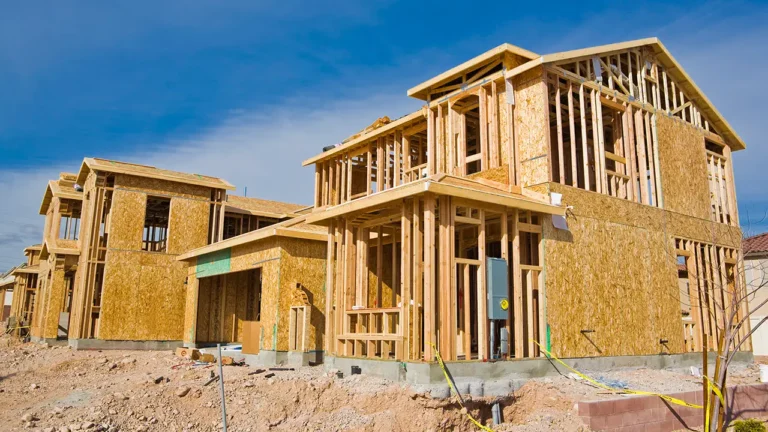Introduction to New Home Construction
In recent years, the demand for new home construction has surged and evolved with the lifestyle changes brought on by modern living. People and families want more than just a home – a personalized sanctuary that mirrors their tastes and beliefs. To cater to this demand, builders and developers have pivoted towards creating innovative, sustainable, and technologically advanced housing solutions. Companies like New Home Star offer invaluable guidance and resources as homebuyers navigate the intricate process of building their dream homes, making the journey as smooth as possible. The shift towards personalized living spaces is driving the popularity of new home construction. Today’s homeowners prioritize functionality, aesthetics, and sustainability, making bespoke homes a more attractive option. This trend is deeply rooted in the desire for homes that are not merely places to reside but extensions of the owner’s personality and lifestyle. With numerous factors fueling the increasing demand, it’s essential to delve into the key elements influencing this shift.
Trends Driving the Popularity of New Home Construction
Several trends are propelling the surge in new home construction. One significant factor is the growing desire for tailored living environments that meet contemporary needs and preferences. Data from a recent Architectural Digest article suggests that homebuyers are increasingly interested in bespoke homes that cater explicitly to their lifestyles. This trend towards customization allows homeowners to incorporate personal tastes into their living spaces, enhancing overall satisfaction and a sense of ownership.
Furthermore, the trend is buoyed by demographic shifts, including the rise of remote work. With more people working from home, there is a heightened need for homes that can accommodate multifunctional spaces—offices, gyms, and leisure areas—all under one roof. This requirement for versatility and multifunctionality is pushing the boundaries of traditional home designs and fostering a more significant focus on custom-built homes.
Technological Advancements in Home Building
Technology is revolutionizing the home building industry, bringing many innovations that enhance new homes’ efficiency, sustainability, and allure. Advanced building materials, smart home systems, and automation are at the forefront of this technological evolution. A striking development in this area is the use of 3D printing for constructing home components. 3D printing technology speeds up production times, reduces waste, and allows for intricate designs that were previously unattainable, marking a significant shift in construction methodologies.
In addition to 3D printing, integrating smart home systems has garnered considerable attention. These systems enable homeowners to remotely control lighting, security, heating, and other functions through smartphones or voice-controlled devices. It not only adds convenience but also enhances energy efficiency, ultimately leading to reduced utility bills and a smaller carbon footprint. By embracing such technological advancements, builders can offer more sophisticated and appealing homes that resonate with modern buyers.
The Importance of Sustainability in New Home Design
As global environmental concerns intensify, sustainability has become a cornerstone of new home construction. Modern homebuyers demand aesthetically pleasing homes and properties that minimize ecological impact. This shift is compelling builders to adopt green building practices and install energy-efficient systems. Sustainable homes, characterized by solar panels, high-efficiency HVAC systems, and sustainable building materials, dramatically reduce the carbon footprint and offer significant long-term savings on energy costs.
Moreover, the concept of sustainability extends beyond environmental considerations to include social and economic dimensions. Sustainable housing contributes to healthier living conditions, reduces operational costs, and enhances the property’s overall value. For example, homes designed with better insulation conserve energy and offer improved indoor air quality and comfort, making them more attractive to discerning buyers.
Challenges in the New Home Construction Market
Despite the positive trends, the new home construction market faces several challenges. Rising material costs, labor shortages, and regulatory hurdles are some of the significant obstacles. Global supply chain disruptions have hit the construction industry hard, causing prices of essential materials like lumber and steel to skyrocket. Additionally, the labor market for skilled construction workers remains tight, resulting in elongated project timelines and higher labor costs, affecting overall budgets and schedules. Regulatory challenges also add complexity to the new home construction landscape. Various local and state regulations can hinder the timely execution of projects, introducing bureaucratic delays and added expenses. Navigating these regulations requires substantial expertise and often necessitates prolonged approvals, posing a significant challenge to efficient project management.
Opportunities for Builders and Developers
While challenges exist, the burgeoning demand for new home construction presents numerous opportunities for builders and developers. They can distinguish themselves within the competitive market by embracing technological advancements and sustainable practices. Builders who integrate smart home technologies and eco-friendly designs can appeal to a broader audience that prioritizes modernity and sustainability. Furthermore, investing in high-quality, sustainable materials can enhance new constructions’ long-term value and appeal.
Strategic partnerships also hold significant potential. Collaborating with technology firms to implement smart home innovations or forming alliances with environmental organizations to ensure sustainable practices can offer competitive advantages. These partnerships can lead to cutting-edge developments that meet the evolving expectations of contemporary homebuyers, ensuring long-term success in a rapidly changing market.
Conclusion
The new home construction industry is set for continued growth, propelled by technological advancements, a focus on sustainability, and the increasing desire for personalized living spaces. Builders and developers who stay attuned to these trends and are adaptable to the changing landscape will find significant opportunities for success. As demand for custom-built, eco-friendly homes rises, the industry must continuously innovate to meet new standards and expectations, paving the way for a sustainable and technologically vibrant future in home construction.
